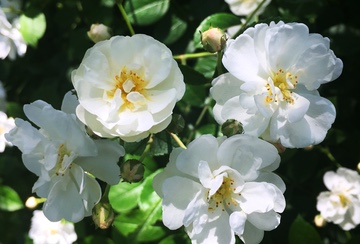
The Other Round Fruit

Quinces are not a very popular fruit at the grocery store and only show up in late November, when they're in season.
It's likely due to the fact that they are rarely consumed raw.
Their sour and gritty texture is tart and becomes quite unpleasant after a few bites, but add the most basic cooking process and they become a culinary delight.
How to use quinces?
Baked in the oven, like apples, with a drizzle of honey.
Grated and turned into irresistible fruit preserves, to which they contribute a precise amount of tanginess and zing to prevent the overly sweet confection from becoming cloying.
Stewed with fowl and sweet caramel sauces, the same way one would use oranges, apricots, or chestnuts.
Turned into a sweet compote, with apples and plums to cut down on their acidity.
I left the best for last. Quinces have a high pectin content, making them an excellent choice for making jellies that are not only delicious but also visually stunning with their clear and rosy hues.

Little Saints

There is a very unusual sweet dish we always made at the beginning of March, a cherished tradition linked to the celebration of forty unnamed martyr saints.
The dish is prepared as the Crones depart, the aforementioned being the first ten days of March, aptly named so for their ever-changing weather and unpredictable mood swings.
Little loops of homemade egg noodle dough are dried on racks for a few days, then boiled and served in their own liquid.
The latter acquires a thick, soup-like consistency due to the starch in the noodles, and is made even richer and more delicious with the addition of sugar, ground walnuts, honey, cinnamon, vanilla, citrus peel, and, for the daring, rum.
This sweet noodle soup, known as little saints, is the final hearty meal of winter before the spring greens appear, and often marks the beginning of Lent.
